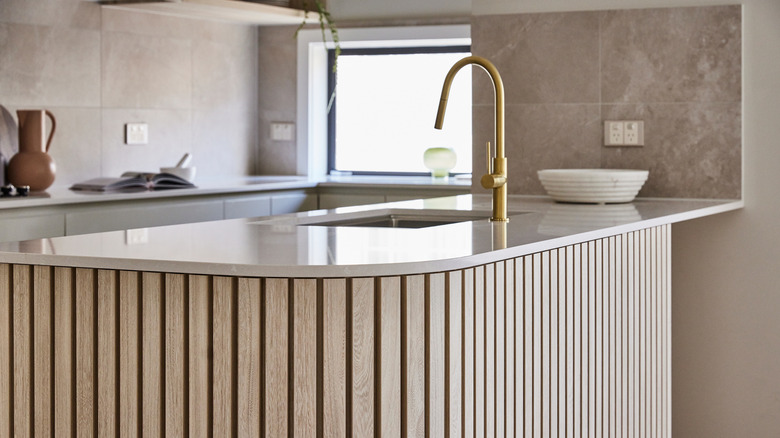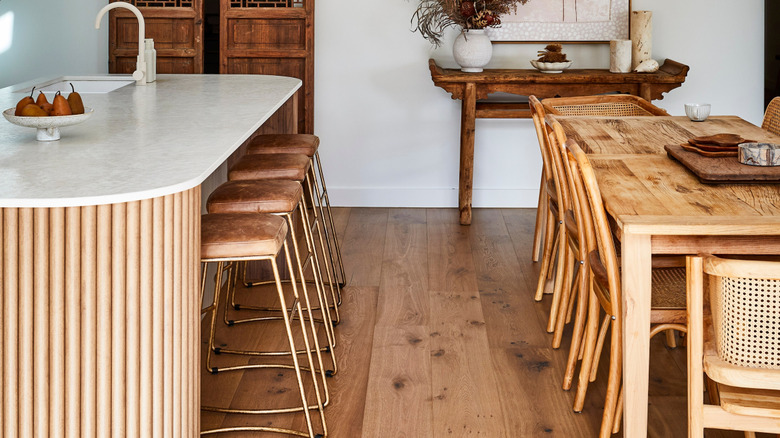Why You May Want To Avoid Trying The Fluted Kitchen Island Trend In Your Home
Fluted islands are one of today's most stylish trends in the kitchen — and for pretty obvious reasons. Even Fixer to Fabulous' Jenny Marrs got on board with the hot design trend and we don't blame her. These types of kitchen islands are showstoppers, to say the least. They pack a visual punch, add trendy charm to cooking zones, and even delight the tactile senses. Adding to that, they create a visual effect that allows light and shadow to dance around the room, depending on the time of day. Plus, some designs flaunt a clean, minimalist look with white or wood tones, while others make a bold statement with vibrant colors ranging from pink to blue.
The point is, this textured finish isn't going anywhere anytime soon — it's almost tempting to jump on the bandwagon if it weren't such a dirt magnet. Yep, fluted designs would be perfect, but a major downside to them is that the stylish grooves trap dust and grime.
Let's backtrack. Fluted kitchen islands are easily recognizable by the vertical grooves (or channels, if you will) that span their bases. If we were to get historical, fluting has been around for as long as Egyptian, Greek, and Roman architecture existed. However, it was primarily used on columns, not kitchen islands. Fast forward to today, and it's the textured design trend that's taking over in 2025. But is it really worth the hype given the extra maintenance this style requires?
The overlooked downsides of fluted kitchen islands
Perhaps the biggest downside of a fluted kitchen island is that it can get dirty very easily. Food particles, dust, and spills tend to accumulate in the grooves, making cleaning quite a hassle. Imagine wiping every slat (and its crannies) one by one whenever it gets grimy, which can happen more frequently than you'd think. Expect to tackle the island with a soft brush, a damp cloth, and mild dish soap every time you deep clean your kitchen. Sounds like too much? You're better off with an easier-to-maintain design if you'd rather spend more time cooking than cleaning. The same can be said if you live with clumsy people or have an especially high-traffic kitchen.
It's also important to note that fluted-style islands aren't the most budget-friendly option. Like most aesthetic things, these tend to cost more, unless you take the DIY route and wrap fluted panels around your existing kitchen island yourself. And finally, don't forget that trends come and go. So before splurging on a custom-fluted kitchen island, think about whether its visual appeal is worth sacrificing practicality for. If it is, just be prepared for a bit more work.

